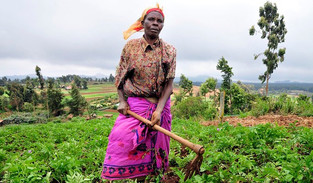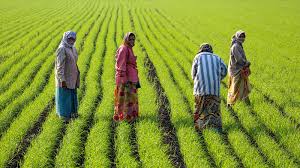How Climate Change deepens existing inequalities and gender-based disadvantages.
- FeliciaaBaldner
- Apr 22, 2021
- 2 min read
Updated: Jul 19, 2021
Let’s break this down: Girls and women constitute most of the world’s low-income population and are more dependent on natural resources threatened by environmental changes. They are far more vulnerable to the consequences of environmental disruption than men. Furthermore, they face social, economic and political barriers that limit their coping capacity. Girls and women in rural areas are especially vulnerable when they are highly dependent on local natural resources for their livelihood.
Those charged with the responsibility of securing water, food and fuel for cooking face the greatest challenges. According to the UN, female farmers currently account for 45-80 percent of all food production in developing countries, depending on the region. About two-thirds of the female labour force in developing countries, and more than 90 percent in many African countries, are engaged in agricultural work. In the context of climate change, traditional food sources become more unpredictable and scarce. Women face loss of income as well as harvests—often their sole sources of food and income.
Currently, women are underrepresented in the decision-making process on environmental governance. They should be equally represented in decision-making structures to allow them to contribute their unique and valuable perspectives on climate change. Governments should thus be encouraged to incorporate gender perspectives into their national policies, action plans and other measures on sustainable development and climate change, through carrying out systematic gender analysis; collecting and utilizing sex-disaggregated data; establishing gender-sensitive benchmarks and indicators, and developing practical tools to support increased attention to gender perspectives.
Girls and women often have strong understandings and expertise that can be used in climate change mitigation, disaster reduction and adaptation strategies. Additionally, women’s responsibilities in communities, often identified as stewards of natural resources, position them well to contribute to livelihood strategies adapted to changing environmental realities.
Girls and women of color are significantly more impacted because of environmental racism - the way in which minority group neighborhoods (populated primarily by people of color, and members of low socioeconomic groups) are burdened with a disproportionate number of hazards, including toxic waste facilities, garbage dumps, and other sources of environmental pollution and foul odors that threaten their human rights. Environmental racism occurs because of institutional rules, regulations, corporate decisions, and governmental policies that fail to account for the health of communities of color worldwide.
This Earth Day, let's all play our role as individuals by recognizing how these inequalities are worsened by Climate Change, and contribute to solutions.










